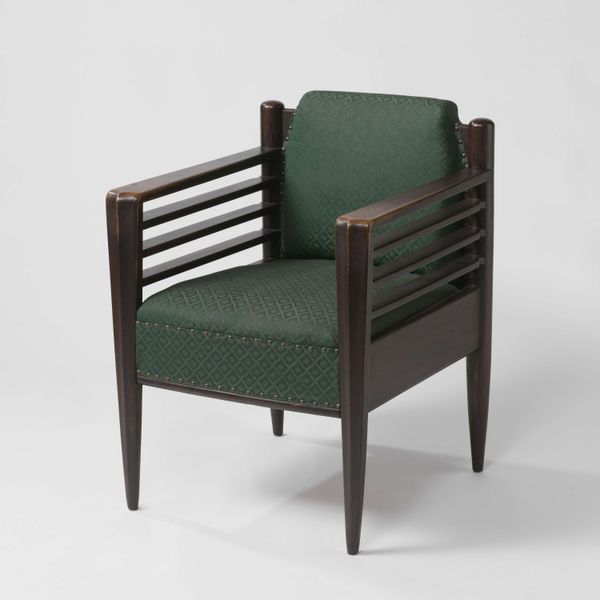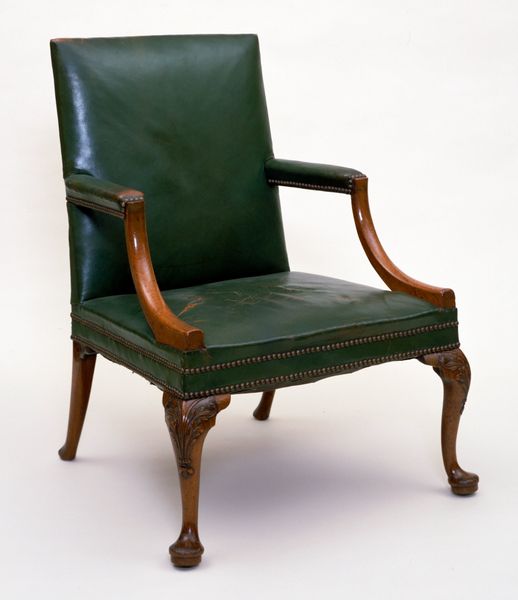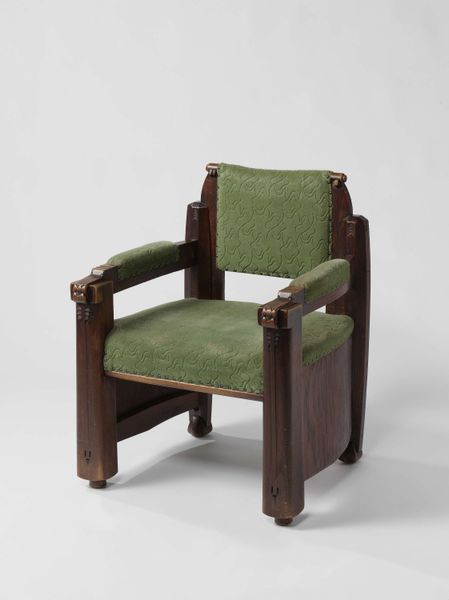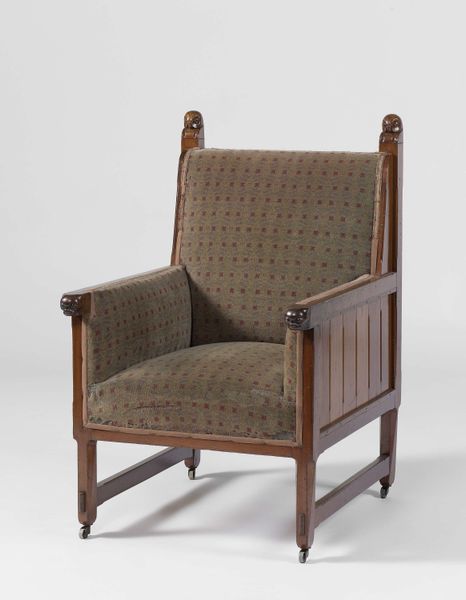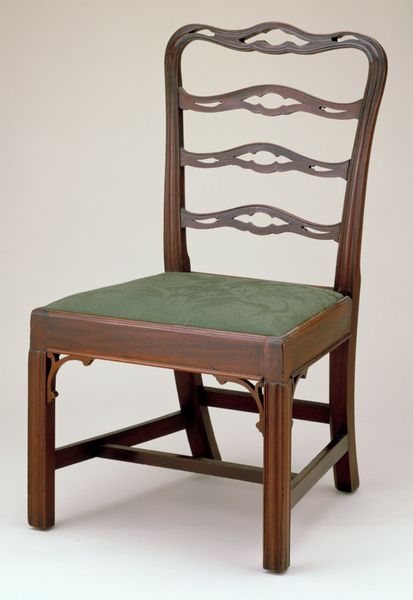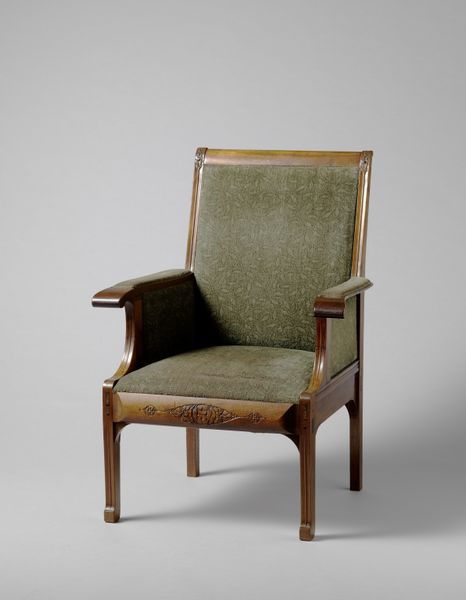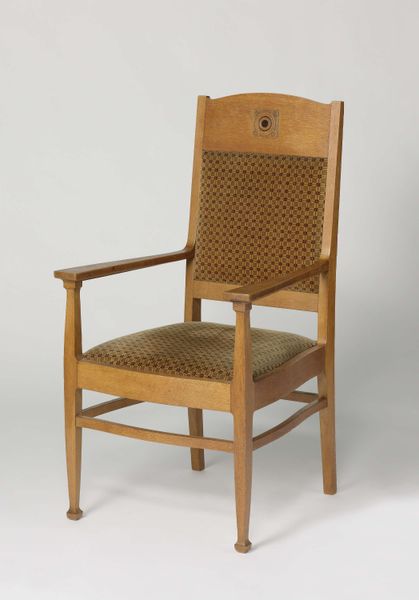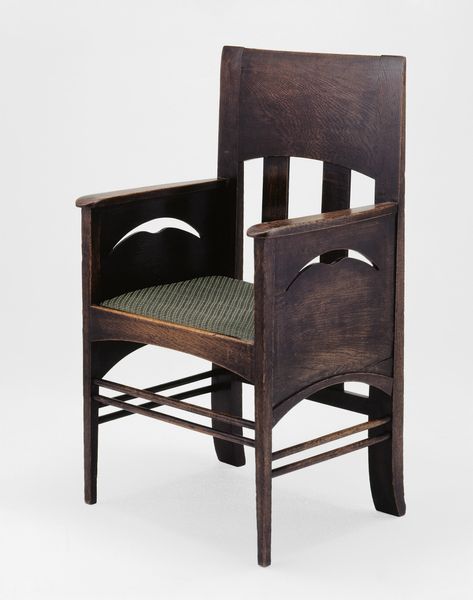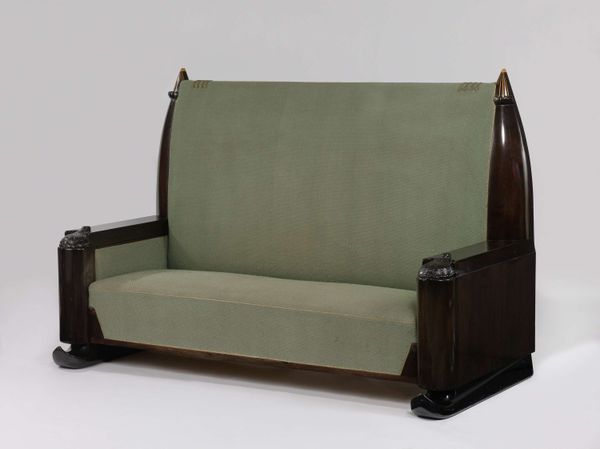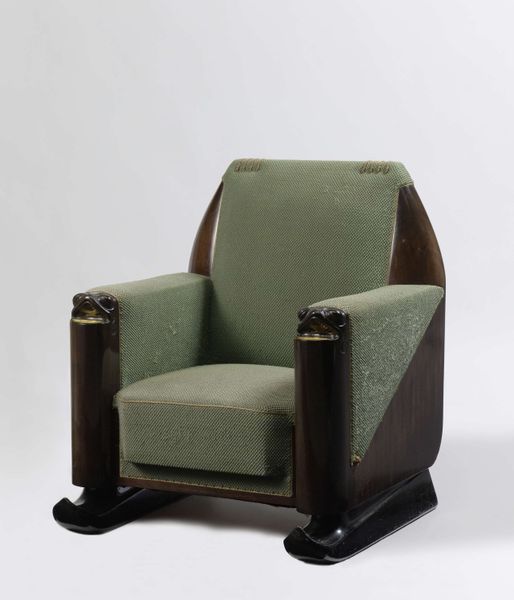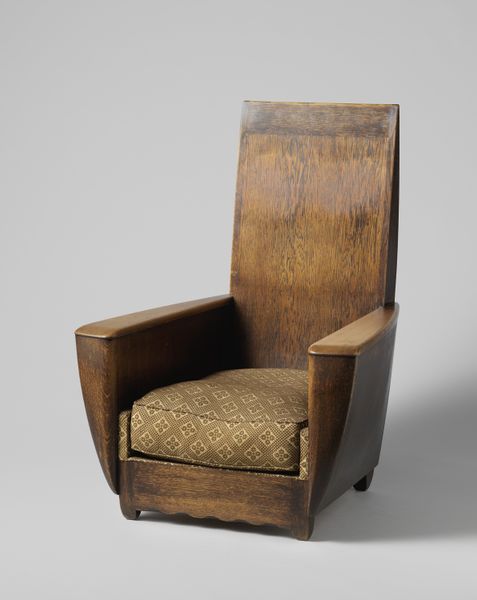
wood
#
arts-&-crafts-movement
#
furniture
#
united-states
#
wood
Dimensions: 36 1/2 x 24 3/8 x 26 in. (92.71 x 61.91 x 66.04 cm)
Copyright: No Copyright - United States
This armchair, made by William Gray Purcell, probably around the turn of the century, invites you to consider making and how it intertwines with daily life. I find myself focusing on the oak frame, how it’s been worked to be both sturdy and full of light. Look at how those vertical slats create a screen, allowing glimpses through. The way the wood is crafted, you can almost feel the maker's hand, the care taken to shape each piece. The green leather, smooth and inviting, hints at comfort and function. It's a practical object, but its beauty lies in the simplicity and the attention to detail. Purcell was working at the same time as the Vienna Secession, and you can see some of that influence. But unlike the Secessionists, he brings a distinctly American sensibility. His chair is as much sculpture as it is furniture. Art doesn’t always have to hang on a wall.
Comments
minneapolisinstituteofart almost 2 years ago
⋮
Purcell and Elmslie designed a number of Midwestern banks. These square brick buildings with their opaque art-glass window walls embodied the qualities of solidity and stability important to bankers and their customers. The most elaborate was the Merchants National Bank of Winona, Minnesota, still in use as a bank today. Twelve chairs of this design were made for the bank directors' boardroom. Their cube-like shape echoes that of the bank building. The vertical spindle "screens" forming the sides probably influenced Purcell and Elmslie's designs of armchairs and decorative interior elements for the Edna S. Purcell residence (now the Purcell-Cutts house), in Minneapolis, designed at the same time.
Join the conversation
Join millions of artists and users on Artera today and experience the ultimate creative platform.
